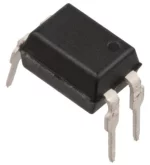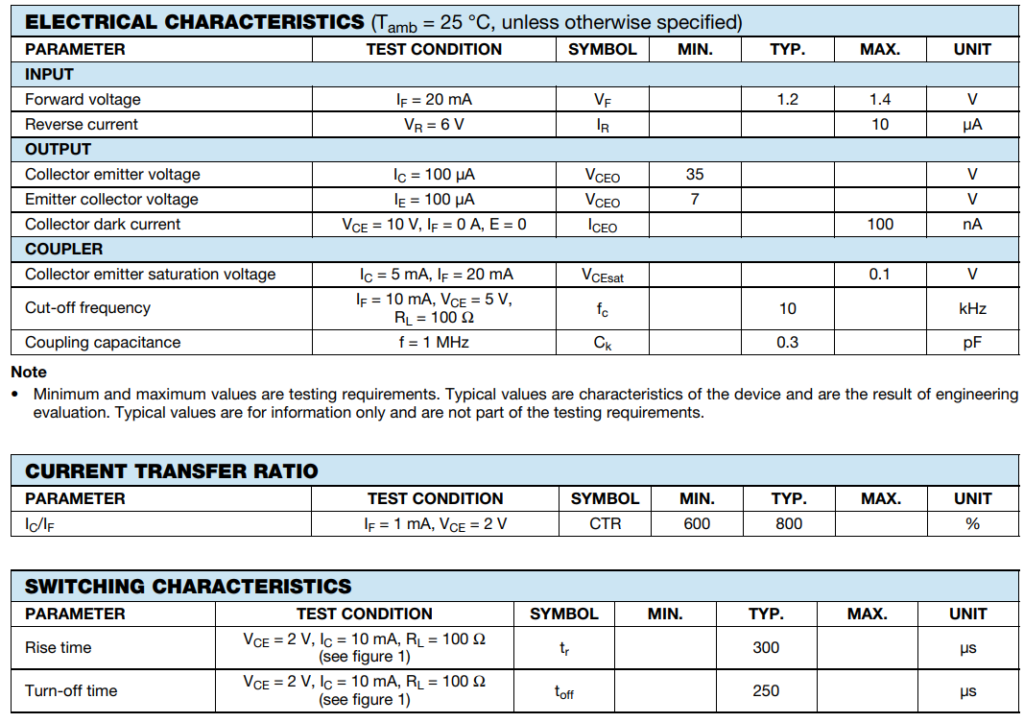Optoisolators¶
An optoisolator (or optocoupler) is an electronic component that provides electrical isolation between two circuits using light. It consists of a light-emitting diode (LED) and a photodetector (such as a phototransistor or a photodiode) housed in a single package. The LED emits light when current flows through it, and the photodetector responds to this light by generating a corresponding electrical signal.

The fundamental purpose of an optoisolator is to allow communication or signal transmission between two electrically isolated circuits while preventing direct electrical connection. This isolation is particularly important when there may be differences in voltage levels, noise, or potential ground loops between the two circuits.
How does an optoisolator work?¶
Input (LED): The input circuit is connected to the LED terminals of the optoisolator. When current flows through the LED, it emits light. The amount of emitted light is usually proportional to the input current.
Isolation: The LED and photodetector are physically separated by a gap or a transparent insulator to ensure electrical isolation between the input and output sides. The insulator also provide mechanical strength to the link inside the package.

Output (Photodetector): The output circuit is connected to the photodetector terminals of the optoisolator. The light emitted by the LED on the input side is detected by the photodetector on the output side, generating an electrical signal that reflects the intensity of the received light.
Applications of optoisolators¶

Safety Isolation: Optoisolators are used when providing galvanic isolation between control circuits and power circuits to ensure safety and prevent voltage spikes or noise from propagating.
Signal Conditioning: Optoisolators can condition and transmit signals between different circuit parts with different ground references or voltage levels.
Noise Reduction: They reduce noise and interference in sensitive circuits by breaking the direct electrical connection between them.
Feedback Loops: Optoisolators can be used in feedback loops to provide isolation between sensing and control circuits, improving stability and reducing noise.
Switching High Voltage Loads: They can control high voltage devices or loads using low voltage control signals.
